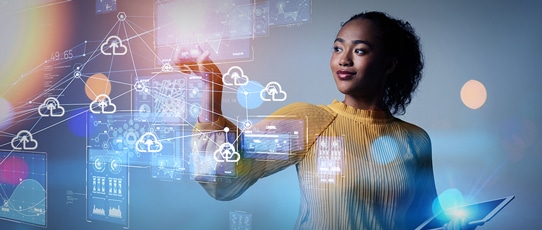In today’s fast-paced tech world, innovation drives how we work, live, and connect with the digital world around us. Two such groundbreaking technologies, Cloud Computing and Edge Computing, are often portrayed as rivals in the computing ecosystem. However, the story is far more nuanced – a tale of contrasting strengths and complementary partnerships.
Mohammed Ameenulla, an expert in Information Technology, gives an in-depth comparison of both technologies.
The Cloud: The sky’s the limit

Imagine a vast, sprawling library where every book, map, and resource you need is instantly available. This library represents cloud computing – a centralised powerhouse of processing and storage hosted over the Internet. The technology allows us to stream Netflix, run complex simulations on virtual machines, and collaborate on Google Docs, regardless of location.
Cloud computing thrives on its scalability and efficiency. Need more storage? Scale up in minutes. Need less? Scale down with ease. This elasticity makes cloud computing ideal for businesses, startups, and individuals. Whether you’re analysing petabytes of data or simply storing vacation photos, the cloud is always ready.
Yet, this convenience comes with a catch: latency. By its very nature, cloud computing requires data to travel from your device to remote servers – sometimes thousands of miles away – and back. This delay can be problematic for real-time applications like gaming, autonomous vehicles, or medical devices.
You may be interested to know more about the advantages of cloud computing.
The Edge: Computing at the frontier

Imagine a small, specialised library branch right in your neighbourhood. It doesn’t have the entire collection but focuses on the most important and frequently used materials. That’s essentially what edge computing does – it brings data processing and storage closer to where it’s being generated.
The real magic of edge computing lies in its speed. Handling data locally on devices or nearby edge servers reduces delays and the need to rely on distant cloud systems. Think about a self-driving car, for example. It must make split-second decisions to avoid accidents. There’s no time to send data to a faraway cloud and wait for a response. Instead, the car’s edge computing system processes everything instantly, right then and there.
This close-to-home processing speeds things up and saves bandwidth. With the explosion of IoT devices—like smart thermostats, wearable fitness trackers, and industrial sensors—edge computing has become essential for managing data directly at its source.
Cloud vs. Edge: A zero-sum game?
It’s easy to see cloud computing and edge computing as rivals, but that’s a bit of a simplistic view. They’re not competing – they’re two sides of the same coin, working together in the broader tech ecosystem.
Cloud computing is perfect for handling tasks requiring much computational power, like big data analysis, machine learning, and global content delivery. Conversely, edge computing excels when speed is everything—like in augmented reality or factory automation—where processing data in real-time with minimal delay is crucial.
Think about a smart city, for instance. Traffic cameras all over the city use edge computing to process real-time video feeds, spotting accidents or traffic jams instantly. This immediate processing helps avoid delays and ensures fast responses. Meanwhile, the data from those cameras can also be sent to the cloud for long-term analysis, like figuring out how to improve traffic patterns over time.
Challenges and opportunities in Cloud vs. Edge Computing
Cloud and edge computing work well together, but they both have their challenges. One issue with the cloud is its dependence on centralised servers, which can raise concerns about data security, especially in industries that handle sensitive information. Edge computing, while faster, involves managing numerous decentralised devices, which can complicate maintenance and security protocols.
Yet, these challenges pave the way for hybrid solutions—systems that leverage both technologies’ strengths. For example, a retail store might use edge computing to analyse customer foot traffic in real time and a cloud-based system to manage inventory and sales data across multiple locations.
Want to excel in cloud computing? Enroll in MCA Cloud Computing at Manipal Academy of Higher Education.
The future: A harmonious coexistence

The future of computing isn’t about choosing sides but integration. Technologies like 5G are blurring the lines between cloud and edge by enabling faster, more reliable connections. At the same time, breakthroughs in AI and machine learning are pushing more businesses to adopt hybrid architectures, where cloud and edge computing work hand in hand.
In this ever-evolving digital landscape, cloud and edge computing are not adversaries but allies. Together, they empower businesses, enhance user experiences, and push the boundaries of what technology can achieve. The question isn’t cloud vs. edge; it’s how to harness both to build a more innovative, faster, and more connected world.
So, whether you’re gazing up at the cloud or exploring the edge, rest assured: the best of both worlds is already here.
Prepare for your next career milestone with us












